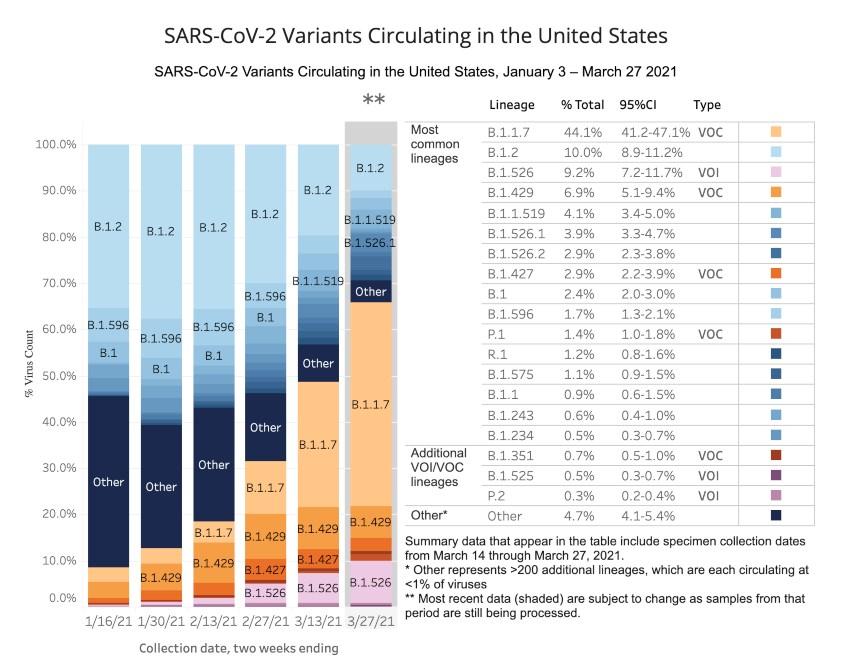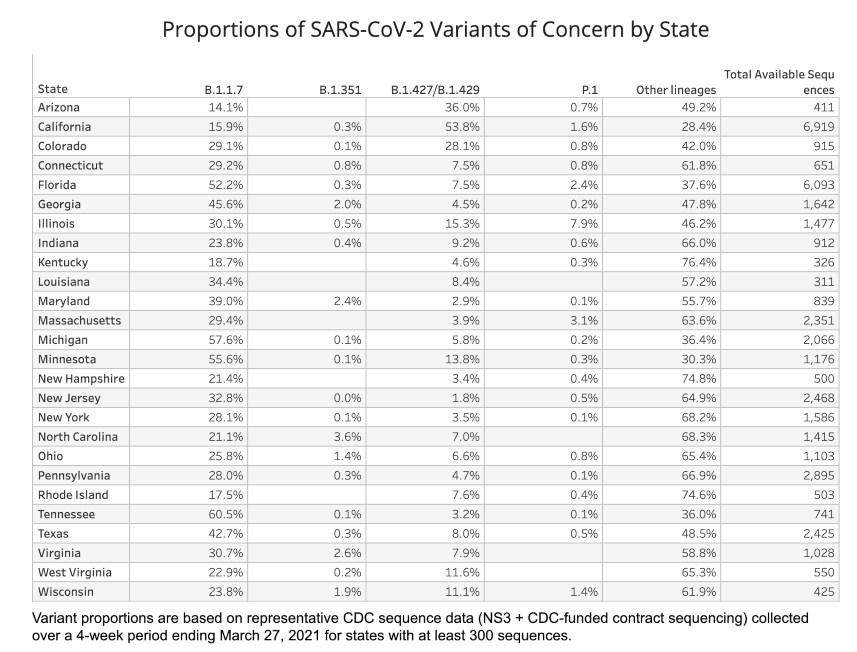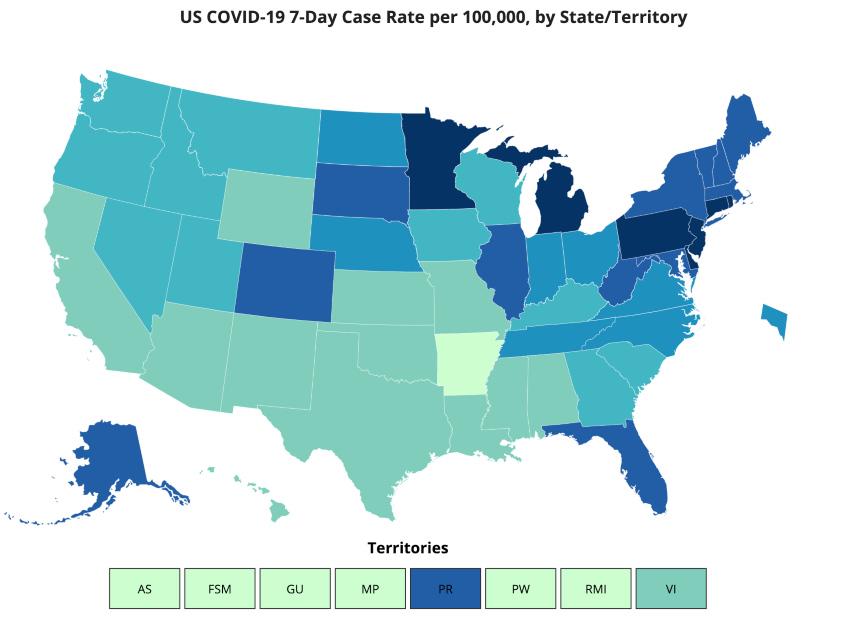I don’t see an obvious pattern in these data. Some states, like Michigan and Minnesota, where B.1.1.7 constitutes more than half of sequenced strains, are in the midst of large outbreaks. On the other hand, Tennessee, where B.1.1.7 is causing 60.5% of cases, has a relatively low case count, while Rhode Island is experiencing a large surge even though B.1.1.7 is still relatively uncommon there.
You might ask your students to look at these three figures and think about some other patterns that might help explain why the virus is surging in some places and not others. One pattern that stands out to me is geographic — generally speaking, the virus is surging in the north and not in the south (with Florida the exception). Could it be that as states ease restrictions, those places that are still too cold for outdoor gatherings are seeing more cases because people are gathering indoors?
But what does all this have to do with B.1.1.7 specifically? Well, when B.1.1.7 emerged in the U.K., it quickly became dominant just as it is now becoming in the U.S. Scientists suspected that the strain was more transmissible. A recent study found that B.1.1.7 spreads 43–90% more efficiently than the original SARS-CoV-2 virus. That’s a big range, but even at the lower end, it’s clear that B.1.1.7 has the potential to cause larger and more explosive outbreaks.
As more and more people are vaccinated, the average age of those infected with the coronavirus is declining. For most of the past year, children and teenagers appeared to be less likely to contract the virus, less likely to become symptomatic, and less likely to spread the virus to others. With B.1.1.7, it seems that is no longer the case. It looks like B.1.1.7 infects children and teenagers more readily than the original strain and replicates to a level that makes it more likely to infect others. Fortunately, the illness continues to be generally mild in young people. It’s pretty complicated to disentangle the facts when you have to account simultaneously for higher transmissibility, fewer vulnerable older adults because of vaccination, and the reopening of schools and resumption of youth sports. But some patterns seem to be emerging. Classrooms conforming to CDC safety guidelines do not seem to be the source of new cases. Youth sports, however, have been implicated in several outbreaks.
What is abundantly clear is that we are not done with the coronavirus pandemic. As long as there are over 60,000 cases per day in the U.S., and only one-third of the population is vaccinated, outbreaks will continue. Worse, by not taking the threat seriously, we are increasing the odds that even more transmissible variants, or variants that evade vaccine-induced immunity, will emerge. So continuing to mask, social distance, test, and contact trace is essential. Communities where the virus is surging may need to pause youth sports for just one more season. And, of course, we need to vaccinate as many people as quickly as possible. So let’s roll up our sleeves — literally — and get to work! And, if you're not sure how to talk to people who don't want to be vaccinated, be sure to check out "How to talk to people with vaccine hesitancy."





